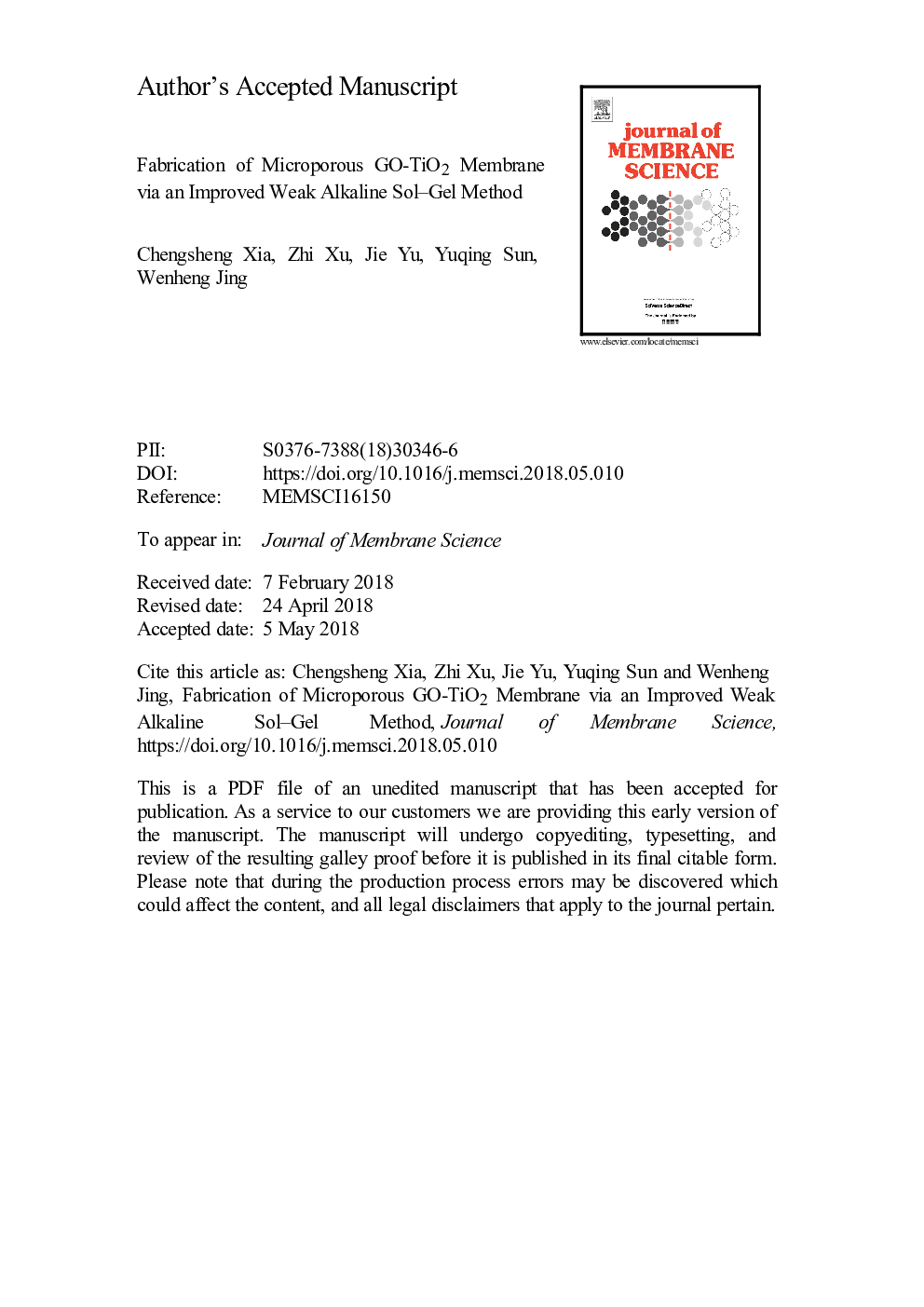| Article ID | Journal | Published Year | Pages | File Type |
|---|---|---|---|---|
| 7019776 | Journal of Membrane Science | 2018 | 34 Pages |
Abstract
Microporous graphene oxide (GO)-TiO2 membranes were successfully fabricated via an improved weak alkaline sol-gel route. Two-dimensional (2D) GO nanosheets were introduced into an alkaline catalyzed titania sol to form a crosslinked GO-TiO2 sol. Then the sol was directly dip-coated on a mesoporous support to transform into a toughened network-structured gel. SEM-EDX characterization indicated that sol infiltration could be effectively suppressed, benefiting from the GO nanosheets possessing a sufficiently large size in horizontal direction. Further, an integrated and crackless membrane layer with a thickness of 2â¯Âµm was formed after sintering at 400â¯Â°C. The results of thermogravimetric (TG) and the X-ray photoelectron spectroscopy (XPS) analysis showed that GO still remained at the sintering temperature, which helps to reduce the membrane pore size. The filtration of Polyethylene glycol (PEG) and UV-vis diffuse reflectance spectra tests revealed that the prepared membrane possessed a pore size of ~1.8â¯nm and a band gap energy of 2.73â¯eV, resulting in visible-light response microporous GO-TiO2 membranes that could be fabricated directly by the facile method.
Related Topics
Physical Sciences and Engineering
Chemical Engineering
Filtration and Separation
Authors
Chengsheng Xia, Zhi Xu, Jie Yu, Yuqing Sun, Wenheng Jing,
